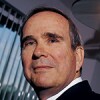Perspective on Apple (AAPL)
Crowd Psychology vs. Fundamental Analysis
Other Stock Buying Factors
---
Apple stock (AAPL) is a classic example of how crowd psychology trumps fundamental analysis in determining the short-term price of a stock.
AAPL is currently selling at about 10 times earnings. Microsoft (MSFT), now considered way past its prime and bloated with cash, is selling at 15 times earnings, and stodgy IBM, which had its prime decades ago, is selling at 14 times earnings. Never mind that Netflix (NFLX) sells at 540 times earnings and Amazon’s (AMZN) P/E is so high, it’s almost incalculable.
So, even if analysts could peg the exact amount of earnings that any of these companies will produce, the multiple placed on those earnings by the investing public can vary by a factor of 100, and stock prices can vary accordingly. If AAPL were accorded a multiple of even 14.5 (the average of MSFT and IBM), its stock would be 45% higher—a mere 250 points.
What this tells you loud and clear is that while analysts labor mightily to calculate project a company’s projected earnings to within pennies, how much the investing public (which of course includes institutional investors as well as mom & pop) is willing to pay for each penny of these earnings is vastly subjective … and will vary greatly over time. This goes for the overall market as well as for individual stocks.
---
Apple enjoys a special place in our pop culture. Its story is legend. Its founder was an icon. Its personal computers are expensive yet highly praised. And millions of us now have its phones and other hand-held gadgets in our pockets, purses and briefcases. Behavioral studies have shown that when we buy or sell a stock, these factors play a prominent role in our decision. How much is tough to measure, but it’s more than most people realize.
So, while the company enjoyed a lofty perch as the world’s largest (in capitalization) when the stock hit 700 last September and analysts were predicting it would hit 1000, it now sits near 450 and analysts are cutting their targets.
[text_ad]
For better or worse, that is the way herds behave, and humans exhibit as much, if not more, herd behavior than buffalo on the prairie. (Studies also show, by the way, that highly trained securities analysts are no different than the rest of us in this regard.)
I’m not offering all this as either a buy or sell recommendation in AAPL right now, but as a perspective on its huge advance and subsequent decline in price over the last year in the context of how group psychology works. The graph below illustrates the trajectory of stock price relative to quarterly earnings. It makes quite a statement about the ability of a stock’s price to track its earnings growth.
I will end by tossing out a rhetorical question to ponder: How comfortable do you feel paying hundreds of times earnings for stocks like NFLX or AMZN while selling one of the world’s most innovative company’s shares at 10 times earnings?
Sometimes, it pays not to be part of the herd.
Your guide to successful options trading,
Rick Lehman
Related Articles:

